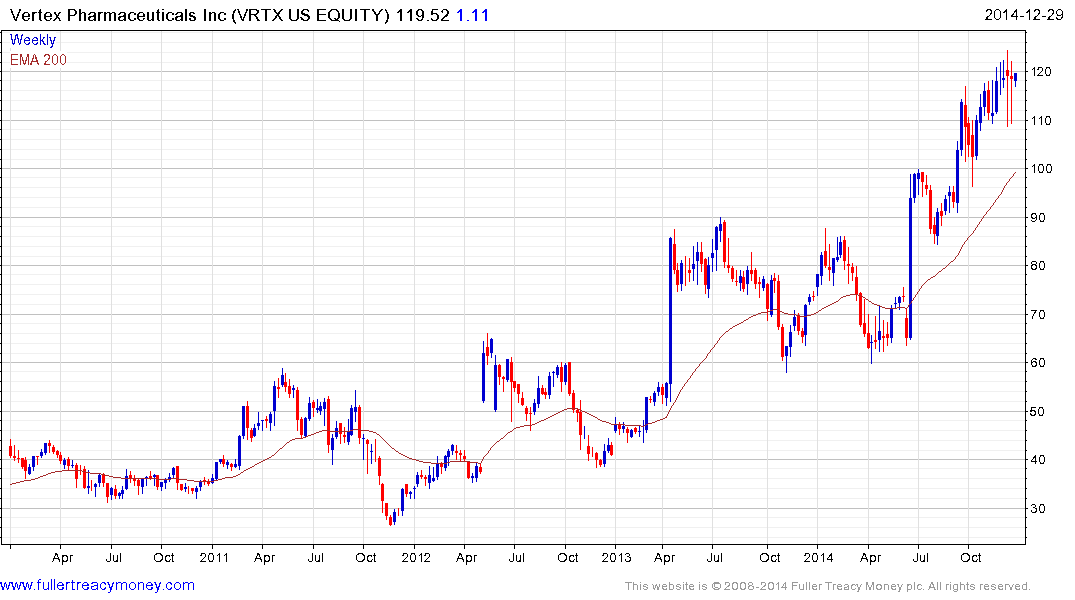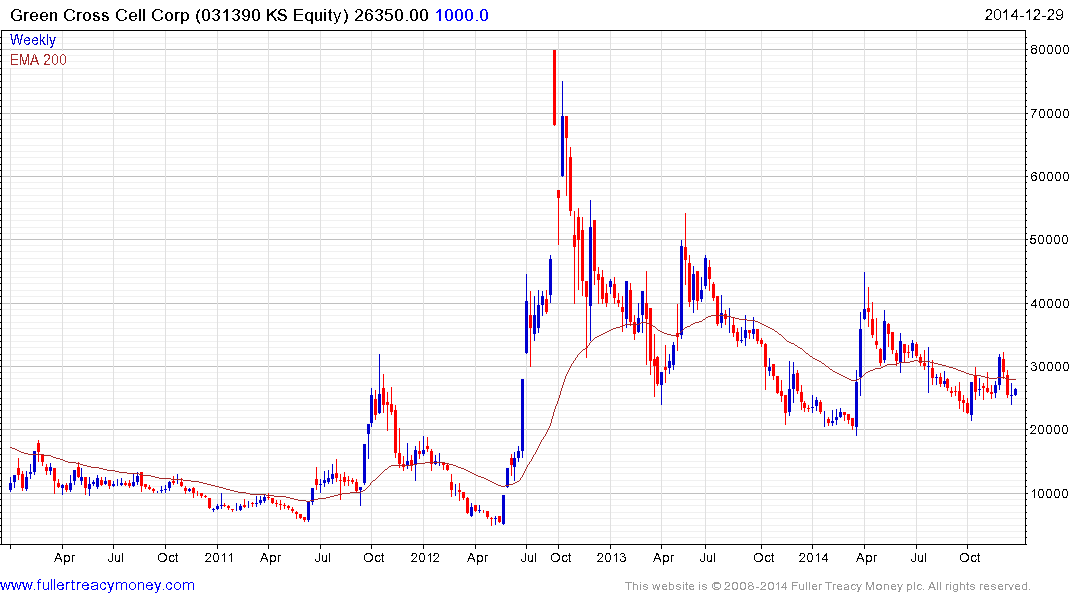China Can Lead Fight Against Antibiotic Resistance
This cautionary article by Jim O'Neill for Bloomberg may be of interest to subscribers. Here is a section:
This danger needs to sink in. The scale of the problem, left unattended, is truly unsettling.
Infections resistant to antibiotics claim about 50,000 lives each year across the European Union and U.S. Hundreds of thousands more deaths are thought to be attributable to AMR (antimicrobial resistance ) worldwide. A low estimate of the global total might be 700,000 deaths a year -- about half as many as are caused by traffic accidents, or diabetes, or diarrheal disease. (There were an estimated 480,000 new cases of drug-resistant tuberculosis alone in 2013, most which went untreated.)Antibiotic Resistance
By 2050, the global total of AMR-related deaths could be more than 10 times bigger, at 10 million a year. That's more than the current global toll of deaths from cancer. The economic cost would be staggering as well, at a cumulative $100 trillion, or roughly six years' worth of U.S. gross domestic product.These shocking numbers are conservative estimates. They're based on two studies we commissioned from RAND Europe and KPMG.
The researchers looked at three bugs that you tend to catch in hospitals (E. coli, Klebsiella pneumonia and Staphylococcus aureus) and three more well-known illnesses (HIV, tuberculosis and malaria). That list is far from exhaustive. Also, the estimates don’t include indirect consequences, such as higher health-care costs or the likelihood that treatments such as surgeries and chemotherapy might become prohibitively dangerous.
We looked out as far as 2050 because this period allows us to consider the full emergence of the BRIC countries (Brazil, Russia, India and China) and their followers in the MINT group (Mexico, Indonesia, Nigeria and Turkey) as major economies. The combination of immature, inadequate health-care systems and rising incomes to spend on drugs makes them especially susceptible to the AMR threat. As the report says:
The variation in the AMR problems of individual countries is linked to huge differences in how heavily they use antimicrobial drugs. Global consumption of antibiotics in human medicine rose by nearly 40% between 2000 and 2010, but this figure masks patterns of declining usage in some countries and rapid growth in others. The BRIC countries plus South Africa accounted for three quarters of this growth, while annual per- person consumption of antibiotics varies by more than a factor of 10 across all middle and high-income countries.In China, our research suggests that by 2050 as many as 1 million people a year could die because of AMR. The cumulative economic cost would be $20 trillion -- equivalent to two years of current Chinese output.
Drug resistance is a major concern but is something we do not tend to encounter unless we end up in hospital. Nevertheless, most of us know of someone who contracted such an infection at some point often as a complication to another ailment. As this article from the Cleveland Clinic highlights, there is no easy answer to drug resistant diseases.
In Europe it is often difficult to be prescribed antibiotics. In the USA, it has been our experience that a doctor will prescribe just about anything you ask. Meanwhile, the organic movement is vocally opposed to the use of antibiotics in food production. In China, strong antibiotics are often available over the counter not least because most people self- medicate.
A global concerted effort to curb profligate antibiotic use can only occur if healthcare support networks mature to a stage where self-medication is not essential. This means that investment in health infrastructure such as hospitals, clinics, pharmacies etc. is likely to remain on a growth trajectory.

Companies emphasising their work on multidrug resistance tend to focus on the effect this phenomena has on cancer patients. Vertex Pharmaceuticals is one such company and remains in a reasonably consistent uptrend. A sustained move below the 200-day MA would be required to question medium-term upside potential.
This extreme drug resistance assay test used to identify chemotherapy resistance in cancers is one of the areas where this sector has room to grow. South Korea listed Green Cross Cell Corp is a relatively small company but is one of the few offering a reasonable pure-play on the sector. The share has been ranging above KRW20,000 since late last year and a sustained move below that level would be required to question medium-term scope for additional higher to lateral ranging.

If subscribers have any additional ideas of how to play the drug resistance theme I’m sure the Collective would appreciate some additional discussion.
Back to top


